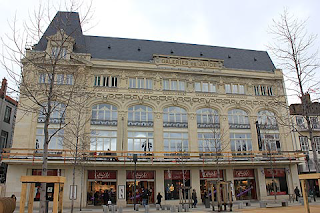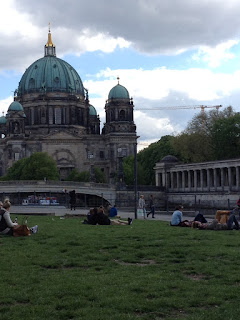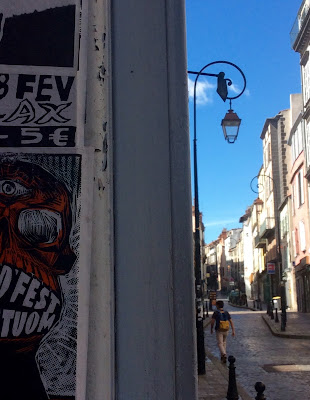Claire-Elise writes:
The new autumn moon was smiling and, full of life,
I headed to the chapel on the edge of town, the breeze biting my face. I walked
quickly. It is always quiet there at dusk and the chapel looks eerily
undamaged. I had been meditating a little while, when, in the spray from the fountain
a furious face appeared… I took a snap, incredulous, then ran home, full of
dread!
Joséphine writes:
When I climb to the top of my favourite tree, I
feel free. The colourful view is wonderful and I can forget the family rows and
the tedious routine at school. The church in the middle symbolizes the importance
of my faith.
Jacinthe writes:
From the top of the highest tower of the town,
she saw a bird speeding towards the distant hills. The girl let loose her long
black hair, closed her eyes and slowly spread out her arms. She felt free in
the breeze.
Camille writes:
3:15 am. A middle aged man, long salt and
pepper beard and gold frame glasses, out of breath, sits
on the bench. He listens carefully to all the chirping, splashing, rustling, and
creaking around him. “The Holy Chapel garden... I was happy here when I was a kid. I see the gate is still broken... Right, back to work!”. He heaves the heavy package towards his chosen tree, then goes back to the bench to pick up his shovel...
Camille writes:
Saturday night at the Fever theatre: the place
is full, for once. Ladies in ball gowns, men in tuxedos... But the show does
not go on. The actors drink, the actors practice crying. A few faithful of the
dozy audience are there too. It is a wake: two days ago, the body of Mrs Gray,
the star of the show, was found at the bottom of the stairs by the theatre Manager
(he was Mrs Gray’s lover). Had she fallen or was she pushed? Mrs Gray had
talent; people were jealous of her. She was going to go to Paris, to star in a
new show and her lover had not wanted her to leave. Sunday morning: the dead body
of the Manager lies slumped over his office desk; suicide, probably.
































